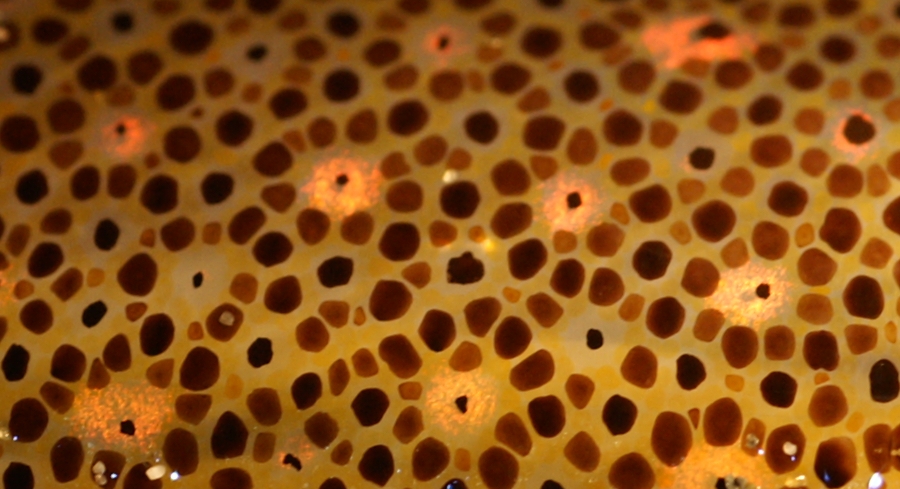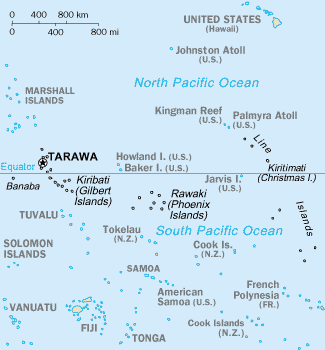|
Phyllorhinichthys
''Phyllorhinichthys'' is a genus of dreamers. Like other oneirodids, they are small, bathypelagic fish with bioluminescent lures. ''Phyllorhinichthys'' is unique amongst the deep-sea anglerfish in having a pair of fleshy, leaf-like structures on its snout. Species There are currently two recognized species in this genus: * '' Phyllorhinichthys balushkini'' Pietsch, 2004 * '' Phyllorhinichthys micractis'' Pietsch, 1969 Distribution and habitat ''Phyllorhinichthys micractis'' has been collected from all three major oceans from a maximum depth of 3500 meters, ranging from near Newfoundland and Bermuda in the Atlantic Ocean, to the Horn of Africa in the Indian Ocean, to Japan and the Line Islands in the Pacific Ocean. ''P. balushkini'' has only been collected in the Atlantic Ocean, ranging from the north to the tropics from a maximum depth of 3200 meters. Description Adult female ''Phyllorhinichthys'' have a short, somewhat globulose body, entirely dark brown to black in color. I ... [...More Info...] [...Related Items...] OR: [Wikipedia] [Google] [Baidu] |
Phyllorhinichthys Balushkini
''Phyllorhinichthys balushkini'' is a species of dreamer found in the Atlantic Ocean The Atlantic Ocean is the second largest of the world's five borders of the oceans, oceanic divisions, with an area of about . It covers approximately 17% of Earth#Surface, Earth's surface and about 24% of its water surface area. During the .... The females of this species grow to a length of SL. The illicium is longer than that of '' P. micractis''. The esca bears a single forward appendage containing a pair of internal light-guiding tubes that diverge from each other at the tip. The rear escal appendage is extremely long, measuring over half the length of the fish, covered with dark skin and ending in a pair of translucent bulbs. The snout flaps are relatively small. References * balushkini Taxa named by Theodore Wells Pietsch III Fish described in 2004 {{Lophiiformes-stub ... [...More Info...] [...Related Items...] OR: [Wikipedia] [Google] [Baidu] |
Phyllorhinichthys Micractis
''Phyllorhinichthys micractis'' is a species of dreamer that has been recorded from the Atlantic, Pacific and Indian Ocean The Indian Ocean is the third-largest of the world's five oceanic divisions, covering or approximately 20% of the water area of Earth#Surface, Earth's surface. It is bounded by Asia to the north, Africa to the west and Australia (continent), ...s. The females of this species grow to a length of SL. The illicium is shorter than that of '' P. balushkini''. The esca has two forward appendages at the tip and the rear appendage is much shorter and stouter than that of ''P. balushkini''. The available specimens vary in the number and presence of additional appendages and filaments. The size of the snout flaps are also highly variable. References * micractis Taxa named by Theodore Wells Pietsch III Fish described in 1969 {{Lophiiformes-stub ... [...More Info...] [...Related Items...] OR: [Wikipedia] [Google] [Baidu] |
Theodore Wells Pietsch III
Theodore Wells Pietsch III (born March 6, 1945) is an American systematist and evolutionary biologist especially known for his studies of anglerfishes. Pietsch has described 72 species and 14 genera of fishes and published numerous scientific papers focusing on the relationships, evolutionary history, and functional morphology of teleosts, particularly deep-sea taxa. For this body of work, Pietsch was awarded the Robert H. Gibbs Jr. Memorial Award in Systematic Ichthyology by the American Society of Ichthyologists and Herpetologists in 2005. Pietsch has spent most of his career at the University of Washington in Seattle as a professor mentoring graduate students, teaching ichthyology to undergraduates, and curating the ichthyology collections of the UW Burke Museum of Natural History and Culture. His zoological author abbreviation is Pietsch. Education Pietsch attended John Adams High School in Indiana. After a B.A. in zoology at the University of Michigan he did a M.S. and P ... [...More Info...] [...Related Items...] OR: [Wikipedia] [Google] [Baidu] |
Indian Ocean
The Indian Ocean is the third-largest of the world's five oceanic divisions, covering or approximately 20% of the water area of Earth#Surface, Earth's surface. It is bounded by Asia to the north, Africa to the west and Australia (continent), Australia to the east. To the south it is bounded by the Southern Ocean or Antarctica, depending on the definition in use. The Indian Ocean has large marginal or regional seas, including the Andaman Sea, the Arabian Sea, the Bay of Bengal, and the Laccadive Sea. Geologically, the Indian Ocean is the youngest of the oceans, and it has distinct features such as narrow continental shelf, continental shelves. Its average depth is 3,741 m. It is the warmest ocean, with a significant impact on global climate due to its interaction with the atmosphere. Its waters are affected by the Indian Ocean Walker circulation, resulting in unique oceanic currents and upwelling patterns. The Indian Ocean is ecologically diverse, with important ecosystems such ... [...More Info...] [...Related Items...] OR: [Wikipedia] [Google] [Baidu] |
Caudal Peduncle
Fins are moving appendages protruding from the body of fish that interact with water to generate thrust and help the fish swim. Apart from the tail or caudal fin, fish fins have no direct connection with the back bone and are supported only by muscles. Fish fins are distinctive anatomical features with varying structures among different clades: in ray-finned fish (Actinopterygii), fins are mainly composed of bony spines or rays covered by a thin stretch of scaleless skin; in lobe-finned fish (Sarcopterygii) such as coelacanths and lungfish, fins are short rays based around a muscular central bud supported by jointed bones; in cartilaginous fish (Chondrichthyes) and jawless fish (Agnatha), fins are fleshy " flippers" supported by a cartilaginous skeleton. Fins at different locations of the fish body serve different purposes, and are divided into two groups: the midsagittal ''unpaired fins'' and the more laterally located ''paired fins''. Unpaired fins are predominantl ... [...More Info...] [...Related Items...] OR: [Wikipedia] [Google] [Baidu] |
Melanophore
Chromatophores are cells that produce color, of which many types are pigment-containing cells, or groups of cells, found in a wide range of animals including amphibians, fish, reptiles, crustaceans and cephalopods. Mammals and birds, in contrast, have a class of cells called melanocytes for coloration. Chromatophores are largely responsible for generating skin and eye colour in ectothermic animals and are generated in the neural crest during embryonic development. Mature chromatophores are grouped into subclasses based on their colour under white light: xanthophores (yellow), erythrophores (red), iridophores (reflective / iridescent), leucophores (white), melanophores (black/brown), and cyanophores (blue). While most chromatophores contain pigments that absorb specific wavelengths of light, the color of leucophores and iridophores is produced by their respective scattering and optical interference properties. Some species can rapidly change colour through mechanisms that trans ... [...More Info...] [...Related Items...] OR: [Wikipedia] [Google] [Baidu] |
Pacific Ocean
The Pacific Ocean is the largest and deepest of Earth's five Borders of the oceans, oceanic divisions. It extends from the Arctic Ocean in the north to the Southern Ocean, or, depending on the definition, to Antarctica in the south, and is bounded by the continents of Asia and Australia in the west and the Americas in the east. At in area (as defined with a southern Antarctic border), the Pacific Ocean is the largest division of the World Ocean and the hydrosphere and covers approximately 46% of Earth's water surface and about 32% of the planet's total surface area, larger than its entire land area ().Pacific Ocean . ''Encyclopædia Britannica, Britannica Concise.'' 2008: Encyclopædia Britannica, Inc. The centers of both the Land and water hemispheres, water hemisphere and the Western Hemisphere, as well as the Pole of inaccessi ... [...More Info...] [...Related Items...] OR: [Wikipedia] [Google] [Baidu] |
Line Islands
The Line Islands, Teraina Islands or Equatorial Islands () are a chain of 11 atolls (with partly or fully enclosed lagoons, except Vostok and Jarvis) and coral islands (with a surrounding reef) in the central Pacific Ocean, south of the Hawaiian Islands. Eight of the atolls are parts of Kiribati. The remaining three— Jarvis Island, Kingman Reef, and Palmyra Atoll—are territories of the United States grouped with the United States Minor Outlying Islands. The Line Islands, all of which were formed by volcanic activity, are one of the longest island chains in the world, stretching from northwest to southeast. One of them, Starbuck Island, is near the geographic center of the Pacific Ocean (). Another, Kiritimati, has the largest land area of any atoll in the world. Only Kiritimati, Tabuaeran, and Teraina have a permanent population. Besides the 11 confirmed atolls and islands, Filippo Reef is shown on some maps, but its existence is doubted. The International Date L ... [...More Info...] [...Related Items...] OR: [Wikipedia] [Google] [Baidu] |
Japan
Japan is an island country in East Asia. Located in the Pacific Ocean off the northeast coast of the Asia, Asian mainland, it is bordered on the west by the Sea of Japan and extends from the Sea of Okhotsk in the north to the East China Sea in the south. The Japanese archipelago consists of four major islands—Hokkaido, Honshu, Shikoku, and Kyushu—and List of islands of Japan, thousands of smaller islands, covering . Japan has a population of over 123 million as of 2025, making it the List of countries and dependencies by population, eleventh-most populous country. The capital of Japan and List of cities in Japan, its largest city is Tokyo; the Greater Tokyo Area is the List of largest cities, largest metropolitan area in the world, with more than 37 million inhabitants as of 2024. Japan is divided into 47 Prefectures of Japan, administrative prefectures and List of regions of Japan, eight traditional regions. About three-quarters of Geography of Japan, the countr ... [...More Info...] [...Related Items...] OR: [Wikipedia] [Google] [Baidu] |
Atlantic Ocean
The Atlantic Ocean is the second largest of the world's five borders of the oceans, oceanic divisions, with an area of about . It covers approximately 17% of Earth#Surface, Earth's surface and about 24% of its water surface area. During the Age of Discovery, it was known for separating the New World of the Americas (North America and South America) from the Old World of Afro-Eurasia (Africa, Asia, and Europe). Through its separation of Afro-Eurasia from the Americas, the Atlantic Ocean has played a central role in the development of human society, globalization, and the histories of many nations. While the Norse colonization of North America, Norse were the first known humans to cross the Atlantic, it was the expedition of Christopher Columbus in 1492 that proved to be the most consequential. Columbus's expedition ushered in an Age of Discovery, age of exploration and colonization of the Americas by European powers, most notably Portuguese Empire, Portugal, Spanish Empire, Sp ... [...More Info...] [...Related Items...] OR: [Wikipedia] [Google] [Baidu] |
Horn Of Africa
The Horn of Africa (HoA), also known as the Somali Peninsula, is a large peninsula and geopolitical region in East Africa.Robert Stock, ''Africa South of the Sahara, Second Edition: A Geographical Interpretation'', (The Guilford Press; 2004), p. 26 Located on the easternmost part of the African mainland, it is the fourth largest peninsula in the world. It is composed of Somaliland, Somalia, Djibouti, Ethiopia, and Eritrea. Although not common, broader definitions include parts or all of Kenya and Sudan.John I. Saeed, ''Somali'' – Volume 10 of London Oriental and African language library, (J. Benjamins: 1999), p. 250.Sandra Fullerton Joireman, ''Institutional Change in the Horn of Africa'', (Universal-Publishers: 1997), p.1: "The Horn of Africa encompasses the countries of Ethiopia, Eritrea, Djibouti, and Somalia. These countries share similar peoples, languages, and geographical endowments." It has been described as a region of geopolitical and strategic importance, since it ... [...More Info...] [...Related Items...] OR: [Wikipedia] [Google] [Baidu] |




